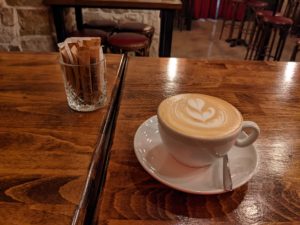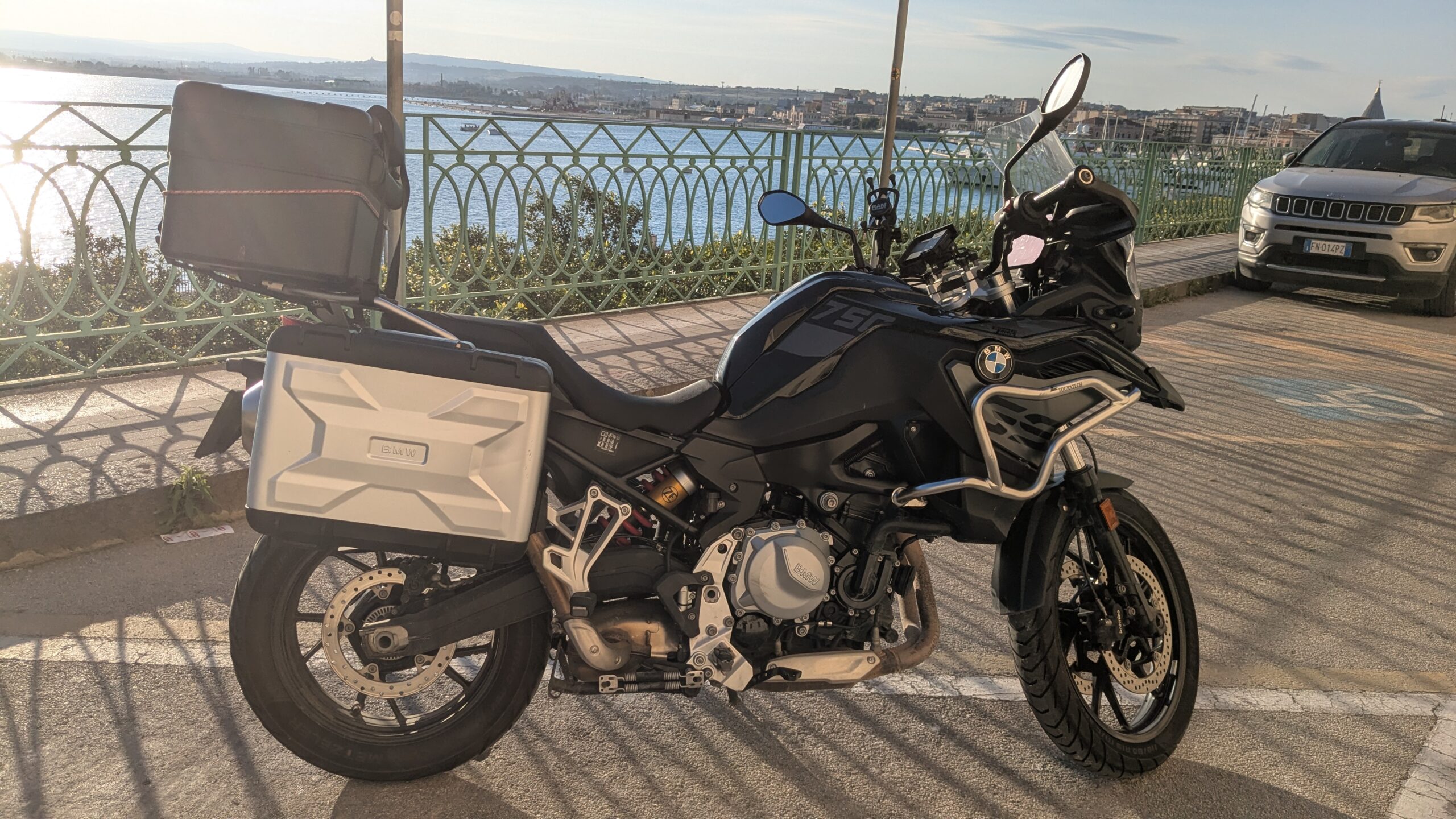12.06.21
If you’d like to read the online version: https://www.croatiaweek.com/exploring-croatias-coffee-and-cafe-culture/
When I arrived in Split, Croatia for the first time in May 2019, after I got over my awe of the beauty of this place, something else caught my attention: there were coffee shops everywhere. I couldn’t walk for more than a block or two before running into another one, and the majority of them only sold coffee, but no pastries, although some actually carried beer. What’s up with that, I wondered?
I returned to Split this past October and was reminded again how many coffee shops there were. When I got here I put out a Facebook query and asked where I could get a LARGE, ie, American sized cup of coffee. That generated 54 responses and several great suggestions including many that said, “Get over it. It’s not about the coffee itself, it’s about the café experience. Go in expecting to have TWO cups and enjoy your time there.” That feedback was echoed by my interview with Marin Rimac, who is usually called by his nickname “Dado,” and since he owns one of the most popular java shops in town, 4coffee soul food, and has been in this business for eight years, I invited him for a coffee (!) to share what he could about the Coffee Culture in Croatia. He is not Croatian born, but hails from Germany and has been visiting Croatia for most of his life, although his parents came from Bosnian roots.

“Yes, they are correct in telling you it’s not just about the coffee. But it’s not just a Croatia thing, either” he said, “and covers most of the Balkan countries. Coffee here is a bit different than in western europe, though they love their coffee there, too. Many people here in Croatia own their property and receive income from it, so lots of them have time on their hands. Cafés are watering holes, meeting places, where people gather and catch up.” He describes it as a “Southern Europe” thing.
Using a population of 178,000 per the 2011 census (which is probably higher now) I asked him how many shops there were in town. I was looking to determine how many coffee shops there were for each person. “Could there be 1780 shops in the Split area?” I asked, and he shrugged and said, “Who knows?” I used that number because it would calculate to one shop per 100 people, and that possibility blew me away. I mean, in the US there is a Starbucks on every corner, but the population difference is much larger.
“The problem, “ he continued, “is that most coffee served is ‘industrial’ coffee, which is not that good a quality. When I arrived I saw that ‘specialty’ coffee was hard to find and that is what made me focus on that market. I wasn’t intimidated by the number of shops since most of them were all the same.” The people of Split, and presumably other areas as well, have learned to tell the difference, and the term “specialty coffee” came up in several of my Facebook responses.
But what IS specialty coffee? “Let me put it this way,” he said. “I get my own green beans from agencies I trust. I roast my own beans, which are all handpicked. I have notes about when it was picked, how it was washed, and I can follow the whole timetable until I get it here. The way that specialty coffee is treated is more like a fine wine or quality whiskey or scotch, and that has a huge impact on the final product.” The good news is that the good news has spread and there are half a dozen (and growing!) specialty coffee shops in Split, with surely more to come.
As an entrepreneur for decades, I have met many of my kind and one thing I recognize is passion, and Dado had that in spades.
The problem with coffee is that the industry has become too “Americanized” if I can use that term. If we look back a few decades, there weren’t a lot of JUST coffee shops in the sixties and seventies. There were some that also offered entertainment and other nighttime activities, but pure coffee shops were rare. The institute of coffee came about with massive numbers, and just like other fast-food chains and other businesses like that, they were solely driven by quantity, not quality. That probably works better in America where people get much of their coffee “on the go,” but here in Croatia and much of Europe, coffee is not treated as a pick me up, quick caffeine jolt, but instead, more of a lifestyle enhancer. And that is certainly the case in Split and Croatia in general.
Dado echoes that thought and describes what is happening today as the “third wave.” The first waves, maybe a half century ago, grew into the massive growth of coffee shops in general during the 70’s, and now people are balking at “boring” coffee and want something different; something better. The coffee drinking public pays attention and they have developed a more refined palate.
“What really changed things was the invention of the espresso machine,” he said, which surprisingly took place over a century ago. But espresso machines did not really become practical—or affordable—until just a few decades ago. That simple machine is more compact and efficient than it was in the beginning. In my travels the way they drink espresso in other countries, like Italy is NOT like we do here in Croatia! The average enjoyment time of an espresso shot in Rome can be measured in minutes, not hours.
In Croatia people love their cafes– drinking beers, coke, an espresso with milk, smoking and talking. Being in the cafe is the draw, which is why they linger so long, but a good java makes the experience even more enjoyable.
Coffee is a very unusual bean. It is a tree but has characteristics of a bush, and the coffee bean can be affected by the types of trees around it. It can be roasted in many different ways, too, and of course, it can be brewed perfectly—or not so good. Regardless, the Croatian Coffee Culture has it right. Enjoy the bean. Enjoy the company and enjoy life.



